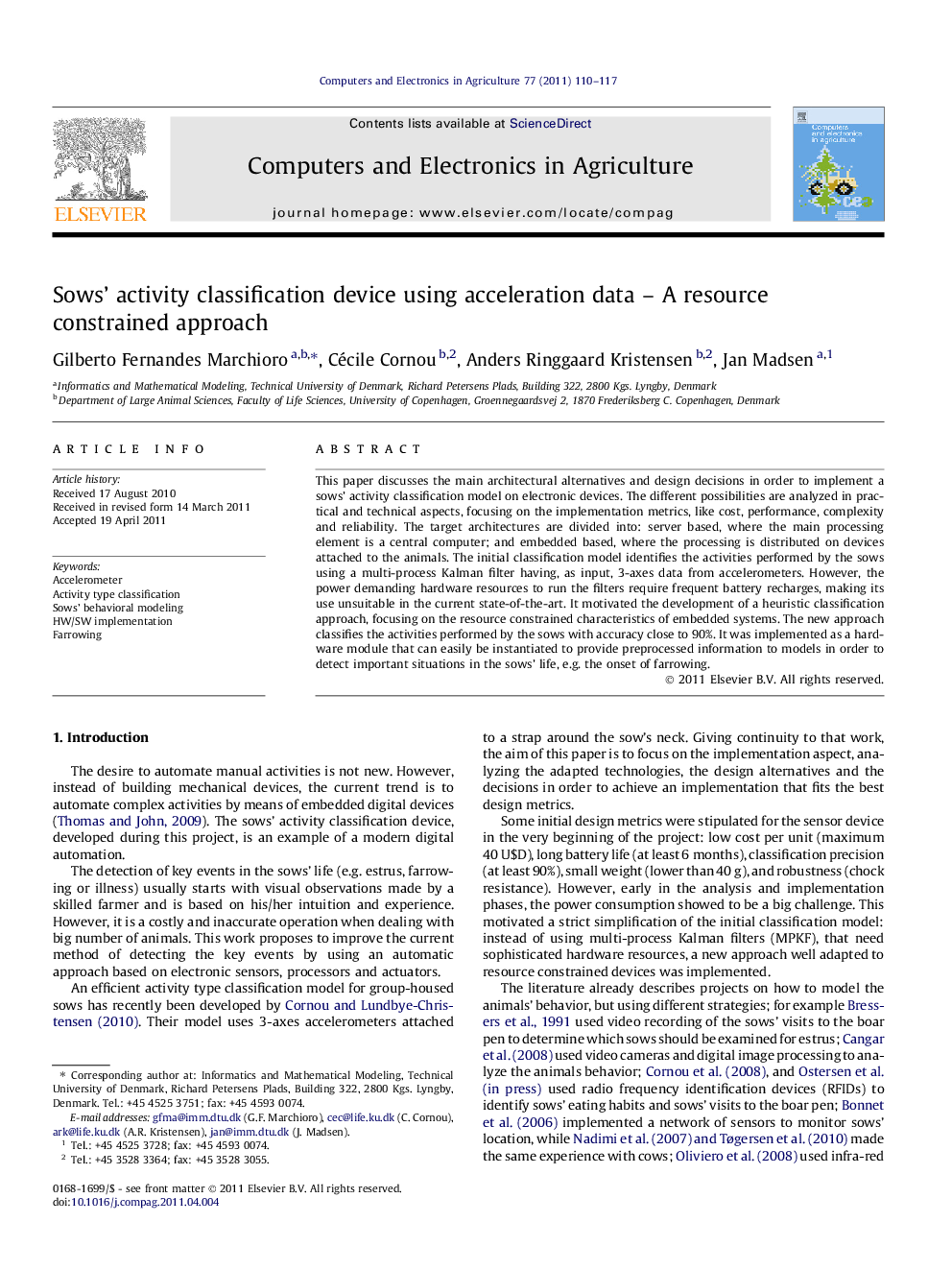| Article ID | Journal | Published Year | Pages | File Type |
|---|---|---|---|---|
| 84693 | Computers and Electronics in Agriculture | 2011 | 8 Pages |
This paper discusses the main architectural alternatives and design decisions in order to implement a sows’ activity classification model on electronic devices. The different possibilities are analyzed in practical and technical aspects, focusing on the implementation metrics, like cost, performance, complexity and reliability. The target architectures are divided into: server based, where the main processing element is a central computer; and embedded based, where the processing is distributed on devices attached to the animals. The initial classification model identifies the activities performed by the sows using a multi-process Kalman filter having, as input, 3-axes data from accelerometers. However, the power demanding hardware resources to run the filters require frequent battery recharges, making its use unsuitable in the current state-of-the-art. It motivated the development of a heuristic classification approach, focusing on the resource constrained characteristics of embedded systems. The new approach classifies the activities performed by the sows with accuracy close to 90%. It was implemented as a hardware module that can easily be instantiated to provide preprocessed information to models in order to detect important situations in the sows’ life, e.g. the onset of farrowing.
► Architectural alternatives to implement a sows’ activity classification device. ► Resource aware activity classification approach to model sows’ behavior. ► Server based and embedded based architectures using 3-axes acceleration data. ► Technologies for HS/SW implementation of an activity classification device. ► Electronic device helping to detect significant situations in the sows’ life.
